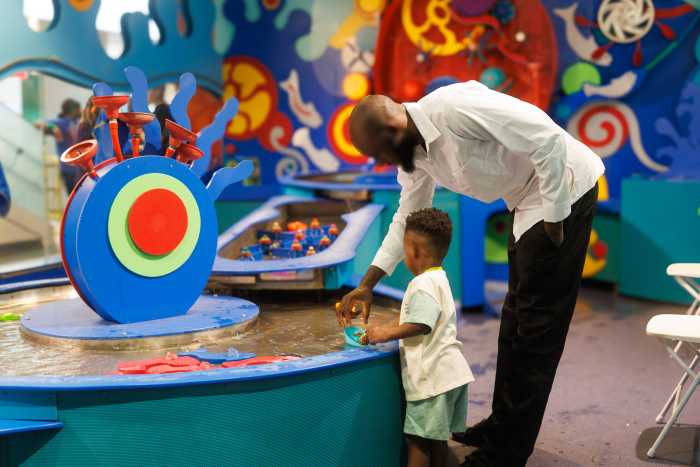Sculptor Linda Stein talks about passions and obsessions animating her latest series of work
I arrived at Linda Stein’s studio on a Monday afternoon when a snowstorm was brewing. Having walked along West Broadway many times to her studio for political gatherings, to look at her new work or just to have a quick lunch and talk, it felt different to be walking downtown to interview her specifically about her current work.
This past summer I had tried, unsuccessfully, to write a poem about a piece of hers, a relief, from an earlier period. I locked myself into a room in her studio space with the noises of her life and work filling the background while I tried to find the language to describe the visual aspects I had found most striking. The sense I had was of watching a warrior rise out of the earth, come to face me, all of her viewers, fully formed and fully armored. I think now what made it difficult for me was that I had not seen Stein’s vulnerability in the work.
What made me want to return now to talk to her about her new work was my clear understanding that what makes her work of such sustaining power is the sense of opposites, the dualities of strength and vulnerability, of masculine and feminine, warrior and pacifist. I am also struck by the ways in which she is conscious of herself and thus able to make herself both the subject and object of her work, as any good artist must be.
Stein began the interview by quite nearly reiterating these thoughts. As she and I sat in her studio workspace, she looked newly minted to me. There was something about the way her short hair topped a body filled with health and, in her jeans and jersey, a confidence and sparkle came through that was engendered, I think, by how obsessed and involved she has become in the new series of works she calls “Knights.”
I looked around the room. Evidence of her earlier work hung on the walls and Stein even sat on one of the pieces she had made, a multi-purpose chair. A picture of her with David Dinkins rested on the glass-topped table and the order and neatness of the space reminded me of how even in the midst of the power of her work, order prevails.
When we began talking, it was not about the older work. Stein is fully consumed by the new series that has grown in number since I saw them in the summer. I liked them then, had been interested to know where the ideas for them came from and what she thought they would lead her to. At that time, she didn’t have answers to those questions.
As Stein spoke about the work, a light came into her eyes. It is something I have often seen in people whose lives are caught up with an artistic endeavor. The creative force, or whatever you want to call it, comes out of them, sometimes as if through their pores. They are so enlivened by their own energy; for it is necessary to have this kind of energy in order to be as committed as one must be to do this kind of work.
On the subject/object nature of her ideas about her art. Stein said, “I am obsessed with this form.” At that moment, she reached for a scrap of paper and drew the schema of a sewing template. It reminded me of those torso figures we see in old tailor shops. That is the basis for all the pieces in the series. She spoke in great detail of the curves and the breasts being partially suggested in the all forms and again and again I could hear the kind of connection she makes to her work, how it gives her such a passionate response to the world in which she lives.
Recently, there was an article in the Sunday Times Book Review about how it is only now that there are literary novels about September 11. It was a curious review in that it tried to both praise and to withhold praise from those who have chosen to write about this topic. I think many people have had that response and I recall that shortly after the attacks, an editor of a prestigious poetry journal asked that no one send any poems about the tragedy because they obviously couldn’t be any good given that not enough time had elapsed.
What struck me about how Stein spoke of these pieces didn’t have to do with the question of why she hadn’t been able to make them sooner, or even of not knowing when she first started the series what they were about, that they were a response to September 11. She described a slow and gradual process that gave her time and opportunity to work out all kinds of technical as well as emotional issues involved in the enterprise—issues that all artists must bring into consciousness before being able to speak about questions of what the work is about.

I found it interesting that Stein listened to books on tape while working. I tried to get her to tell me how the content of the books influenced the creation of the pieces. She pushed off all my probing on that score by saying she couldn’t possibly remember everything she had listened to. Though she mentioned some details of what she had heard, none of them formed any kind of pattern or context, that I could see, that had anything to do with the “Knights.”
When Stein told me that she turned off the tapes when she had a decision to make about something in the forming of the piece, I thought I had discovered the most interesting aspect of this part of her process. I suggested to her that she must listen to the tapes in order to keep the language part of her brain busy so the creative part can work; as a kind of subterfuge, but again, this was more my understanding of her process than her own. She listed a number of books that she had listened to ranging from Aristotle and American history to Simone de Beauvoir. It was an interesting amalgam of topics, but Stein then returned to a discussion of how the artist is the subject of her work, that there is a need to use the self in order to create the art.
The day of the interview, Stein had emailed me an essay she had written about “Knights,” which we discussed. It described the events of her day on September 11, 2001. She wrote about how she, her assistants and their friends running uptown didn’t know what had actually happened—was it a bomb, was it going to happen elsewhere, were they running in the right direction to stay safe? The day went on, as difficult for her as it was for all of us, and when it was all over, it took Stein three years to find the visual response to it that makes up “Knights.” It didn’t come as a surprise to me that these pieces, hanging in her studio—the many different types of them, some in the original metal forms I had originally seen, and newer ones in wood and other, smaller ceramic ones—seemed to provide her with safety.
In Stein’s words: “With this sculpture series, I gradually reinvented the notion of the knight as a strong figure—not in the service of war, not even male; but, rather, an armed and armored female presence with antithetical attributes; a creation steeled in defensive garb yet partially naked; a bodyguard and protective spirit which cannot or will not completely disclaim its vulnerability.”
At that moment in our discussion, Linda took out a copy of the Harrington Lesbian Fiction Quarterly, where she was a featured artist some years ago. That article included a set of little dream memories, vividly recording the sense of fear and danger she experienced in that internal state when she was most vulnerable—in her sleep. She wrote of being chased by men, of the fear of being raped, of being badly harmed and yet in none of those dreams where death had seemed possible did she die or did she ever do bodily harm to any of those about to attack her. I pointed out—not being able to restrain myself—how similar the events of September 11 were to her dreams, the running motivated by fear, not being safe, not knowing if she would be safe. Once again that light behind her eyes grew brighter and her words captured other ideas about the series and about the ways in which she thought about the series, about how obsessed she becomes with them and tries as many different ways of attacking, as it were, the ideas they embody.
We could have talked for many more hours about what made these “Knights” so special both for her as the artist and for me as an admirer of her work. What eventually struck me as I left, having to get back home to think about how all of these ideas could be translated into an article, was how Linda Stein lives and works and walks and breathes the air and the streets where that fateful day occurred in New York City and has been able to translate into a stunning series of sculptural pieces about what the effects have been on her—how it has all empowered her.
With no end in sight, yet, to the pieces in the series, it was with a wonderful sense of anticipation that I left. I knew I could and would make that walk again in order to see the additions to the series and to learn more about how Stein sees them evolving.
gaycitynews.com






































